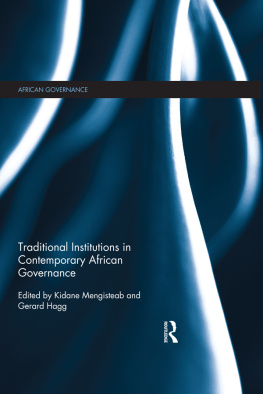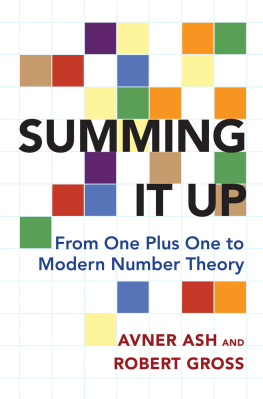Shakarov Avner - Traditional African art : an illustrated study
Here you can read online Shakarov Avner - Traditional African art : an illustrated study full text of the book (entire story) in english for free. Download pdf and epub, get meaning, cover and reviews about this ebook. year: 2015, publisher: McFarland & Company, genre: Children. Description of the work, (preface) as well as reviews are available. Best literature library LitArk.com created for fans of good reading and offers a wide selection of genres:
Romance novel
Science fiction
Adventure
Detective
Science
History
Home and family
Prose
Art
Politics
Computer
Non-fiction
Religion
Business
Children
Humor
Choose a favorite category and find really read worthwhile books. Enjoy immersion in the world of imagination, feel the emotions of the characters or learn something new for yourself, make an fascinating discovery.
- Book:Traditional African art : an illustrated study
- Author:
- Publisher:McFarland & Company
- Genre:
- Year:2015
- Rating:3 / 5
- Favourites:Add to favourites
- Your mark:
- 60
- 1
- 2
- 3
- 4
- 5
Traditional African art : an illustrated study: summary, description and annotation
We offer to read an annotation, description, summary or preface (depends on what the author of the book "Traditional African art : an illustrated study" wrote himself). If you haven't found the necessary information about the book — write in the comments, we will try to find it.
Traditional African art : an illustrated study — read online for free the complete book (whole text) full work
Below is the text of the book, divided by pages. System saving the place of the last page read, allows you to conveniently read the book "Traditional African art : an illustrated study" online for free, without having to search again every time where you left off. Put a bookmark, and you can go to the page where you finished reading at any time.
Font size:
Interval:
Bookmark:


McFarland & Company, Inc., Publishers
Jefferson, North Carolina
LIBRARY OF CONGRESS CATALOGUING DATA ARE AVAILABLE
BRITISH LIBRARY CATALOGUING DATA ARE AVAILABLE
e-ISBN:978-1-4766-2003-9
2015 Avner Shakarov and Lyubov Shakarov-Senatorova. All rights reserved
No part of this book may be reproduced or transmitted in any formor by any means, electronic or mechanical, including photocopyingor recording, or by any information storage and retrieval system,without permission in writing from the publisher.
On the cover: Mask, Baule-Yaure, Ivory Coast, wood, height 14 in. (35.6 cm); Couple with Child, Zela, Democratic Republic of Congo (former Zaire)wood, height 9 in. (24.1 cm) (photographs by the authors)
McFarland & Company, Inc., Publishers
Box 611, Jefferson, North Carolina 28640
www.mcfarlandpub.com
Lyubov Senatorova
With this book, we are proud to present artwork from Africa that possesses great beauty and power and high aesthetic quality. We set out to explore the heritage that informs the art of black Africa, its nature and the styles of various individual artists, as well as the culture and artistic past of the people. This book gives the reader a clear look at the work of many sculptors, showing the beauty and expressive form of their carved figures and masks which have the power to move us aesthetically and emotionally.
This collection presents a classic picture of the traditional African art that was available when Avner Shakarov began to take an early interest in what was still called primitive art. In his foreword to Vil Mirimanovs book Spirits of Black Africa (2009), Shakarov recounts his personal experience in collecting African art. He responded to it aesthetically and emotionally and his response grew in intensity over the years. His first objects from Africa were acquired in 1962, when he was introduced to African art while studying at Moscow College. Young African students were also studying there and in other colleges. Through his college friends he befriended many African students, including those from the Moscow University of Patrice Lumumba. When the students went back home to Africa on winter and summer vacations they would bring him artworks from their ancestors villages and photographs of their tribal life, traditions and culture. In the early 1970s Shakarov moved to Western Europe, where he traveled to and lived in many European countries, and then in the United States.
We hope that readers will find this book useful as well as beautiful; that it will be helpful to study and an important addition to the literature and history of African art. Through African sculpture we begin to understand the ennobling vision and sensibility inherent in these civilizations and we see how this vision has been manifested by its extraordinary artists. Avner Shakarov has studied the arts of Africa for decades. He is dedicated to African art and has traveled the African continent during summer student vacations. He visited African villages throughout the 1960s and studied African arts. He visited caves and altars where some cultures kept figures carved in memory of deceased ancestors. He is the principal author of this book, which is devoted to African art techniques. Vil Mirimanov, author of many African art books, in the introduction to his Spirits of Black Africa characterized the collection of Avner Shakarov as containing unique pieces of African art.
Avner Shakarov
Having spent a good many years as a researcher of African art, I understand that education is of critical importance. This book is designed to bring the benefits of knowledge to general public, and to provide basic principles of ethnology to offer the reader greater depth of feeling for the beauty and powerful aspects of African art. It has been designed as a general text, providing a well-balanced variety of information to the reader.
The book is constructed efficiently with historical and analytical text and photographs of stunning artworks that are essential for collectors, students, artists and for all lovers of African traditional art and culture. It is thematically organized around key motifs and may assist museum staff. It presents carefully documented objects, many of which are unique or rare. In the appreciation of African art both past and present, anyone who has eyes to see a work of art does not need an explanation to form a judgment. One immediately perceives what is good and what is not. In other words one grasps the universal language of art. We are pleased, thanks to this language, to show the world what Africa has accomplished, to collect and preserve this material evidence of the cultural heritage of many peoples, to present the objects making up this heritage to the public, and to carry out research on their production and use.
The history of art in Africa covers many centuries. Among the most ancient of these arts are the rock paintings and engravings from Tassili and Ennedi in the Sahara. Other works created by historical African artists living south of the Sahara are each characterized by local tradition and artistic forms. Tribal art of Africa reveals and portrays the marvelous achievements of African artists over thousands of years. The earliest pieces date from the beginning of the first millennium, the most recent from the early twentieth century, before commercial production of art for the tourist trade in the 1980s. All were made by Africans for their own use. I also point out that the book will only examine art forms that sprang up before the period of independence, that is, prior to the 1960s. Before that date powerful religious traditions promoted the creation of numerous high quality sculptures. Religion is the dominant force in African life and society. It determines the nature of African art forms. It is most often manifest in masks, sculpture, ancestor or cult figures, fetishes, and reliquary figures. To analyze these African art qualities further, we will use a number of illustrations of African peoples, and describe a number of independent cultures linked in geography, language, history and religion. Art and sculpture in African cultures were made to be used. African sculpture reflects various traditions and the beliefs of different regions. Political, religious and historical aspects of each region are also evident in their artistic products.
In Africa, a piece of sculpture carved in a prescribed substance is, like the tree from which it was hewn, linked to the vital force of a spirit or an immortal ancestor. Upon those powers a whole family of things and beings depend. There are also reasons for the use of certain kinds of wood. Some species of trees are unsuitable for carving, either because they are too hard to carve or, on the contrary, because they deteriorate too quickly from weather conditions or under the assault of termites. Since the earliest exploration of the African continent, the European mind has been fascinated by the ritual figures and exotic carved images brought back as gifts by generations of travelers and colonizers.
Artist Andre Derain in 1905 acquired an African mask and was overwhelmed by its power and beauty. He showed the mask to Picasso and Matisse and, with them, initiated the great interest in African art in the early 20th century. They were the first Europeans to appreciate the beauty and interest of Negro art and, without previous ethnological knowledge, assembled early private collections of African sculpture. Picasso was particularly fascinated with African masks. After the great discovery he wrote: I have experienced my greatest artistic emotions when I discovered the sublime beauty of sculptures executed by the anonymous artists from Africa. These passionate and rigorously logical religious works are what the human imagination has produced as most potent and most beautiful. At that moment I realized what painting was about.
Next pageFont size:
Interval:
Bookmark:
Similar books «Traditional African art : an illustrated study»
Look at similar books to Traditional African art : an illustrated study. We have selected literature similar in name and meaning in the hope of providing readers with more options to find new, interesting, not yet read works.
Discussion, reviews of the book Traditional African art : an illustrated study and just readers' own opinions. Leave your comments, write what you think about the work, its meaning or the main characters. Specify what exactly you liked and what you didn't like, and why you think so.













